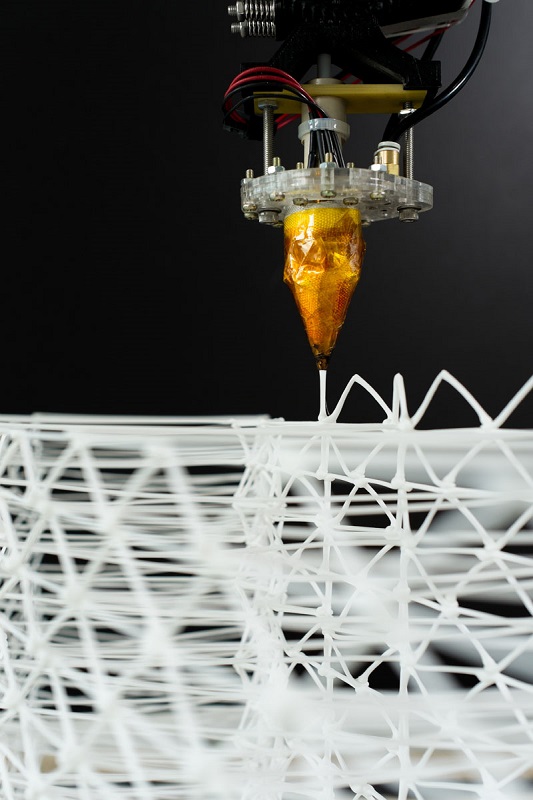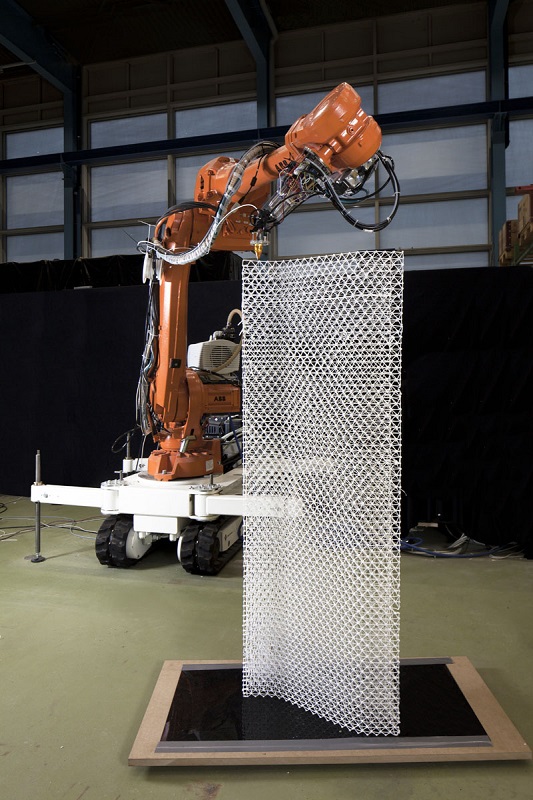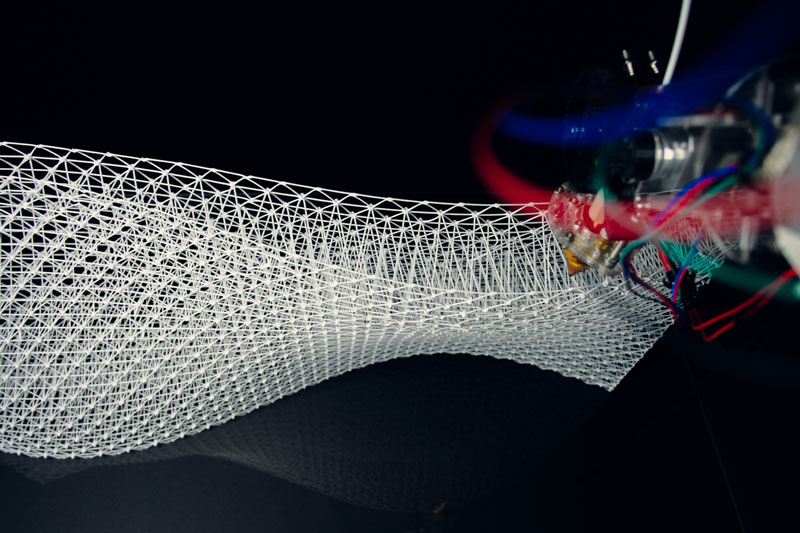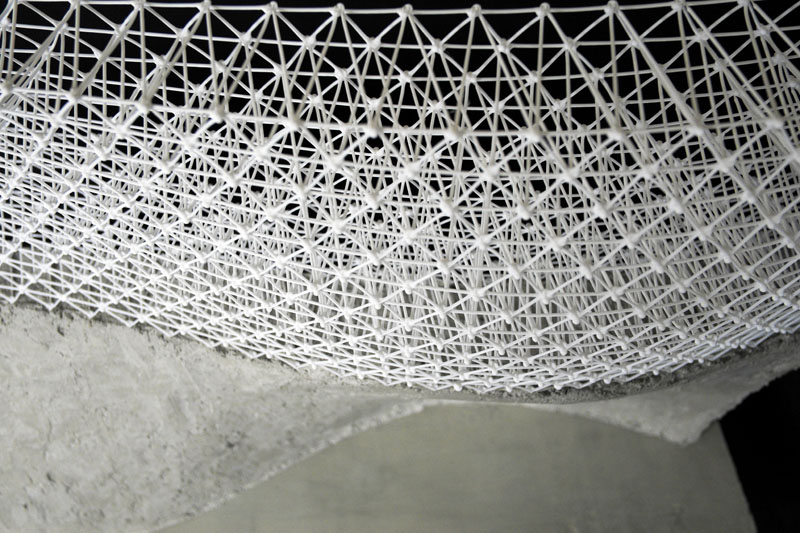Mesh mould metal
Since 2015, the Zurich-based research group Gramazio Kohler Research has been developing ‘mesh mould metal’. This is a project studying the unification of concrete reinforcement and formwork into a single, robotically-fabricated material system.
The first (2012-14) phase of research, ‘Mesh mould’, addressed the 1:1 construction aspects of robotically-fabricated load-bearing structures, and a robotic extrusion process for a polymer mesh.
The second phase, ‘Mesh mould metal’, has focused on the transition of the structurally-weak polymer-based extrusion process into a fully load-bearing construction system, by replicating the process in metal.
The research involves the development of ‘a fully automated bending and welding process for meshes fabricated from 3 mm steel wire.’
Standard industrial robots have limited payload capacities yet have a high capacity for precise spatial coordination. Therefore, their optimal use requires construction processes with minimal mass transfer and a high degree of geometric definition. Subsequently, the focus of the investigation was fabrication with material efficiency in mind, with geometrically complex concrete elements.
The project was conducted in collaboration with Sika Technology AG. Mesh Mould is also embedded into the National Competence Centre in Research (NCCR) Digital Fabrication, and funded by the Swiss National Science Foundation.
Images copyright Gramazio Kohler Research, ETH Zurich.
Content and images courtesy of GKR. For more information, see GKR.
[edit] Related articles on Designing Buildings Wiki
Featured articles and news
Latest Build UK Building Safety Regime explainer published
Key elements in one short, now updated document.
UKGBC launch the UK Climate Resilience Roadmap
First guidance of its kind on direct climate impacts for the built environment and how it can adapt.
CLC Health, Safety and Wellbeing Strategy 2025
Launched by the Minister for Industry to look at fatalities on site, improving mental health and other issues.
One of the most impressive Victorian architects. Book review.
Common Assessment Standard now with building safety
New CAS update now includes mandatory building safety questions.
RTPI leader to become new CIOB Chief Executive Officer
Dr Victoria Hills MRTPI, FICE to take over after Caroline Gumble’s departure.
Social and affordable housing, a long term plan for delivery
The “Delivering a Decade of Renewal for Social and Affordable Housing” strategy sets out future path.
A change to adoptive architecture
Effects of global weather warming on architectural detailing, material choice and human interaction.
The proposed publicly owned and backed subsidiary of Homes England, to facilitate new homes.
How big is the problem and what can we do to mitigate the effects?
Overheating guidance and tools for building designers
A number of cool guides to help with the heat.
The UK's Modern Industrial Strategy: A 10 year plan
Previous consultation criticism, current key elements and general support with some persisting reservations.
Building Safety Regulator reforms
New roles, new staff and a new fast track service pave the way for a single construction regulator.
Architectural Technologist CPDs and Communications
CIAT CPD… and how you can do it!
Cooling centres and cool spaces
Managing extreme heat in cities by directing the public to places for heat stress relief and water sources.
Winter gardens: A brief history and warm variations
Extending the season with glass in different forms and terms.
Restoring Great Yarmouth's Winter Gardens
Transforming one of the least sustainable constructions imaginable.



























